Category: Losses that continue indefinitely
When an associated enterprise consistently realizes losses while the MNE group as a whole is profitable, the facts could trigger some special scrutiny of transfer pricing issues. Of course, associated enterprises, like independent enterprises, can sustain genuine losses, whether due to heavy start-up costs, unfavourable economic conditions, inefficiencies, or other legitimate business reasons. However, an independent enterprise would not be prepared to tolerate losses that continue indefinitely. An independent enterprise that experiences recurring losses will eventually cease to undertake business on such terms. In contrast, an associated enterprise that realizes losses may remain in business if the business is beneficial to the MNE group as a whole. See TPG2017, Para 1.129, 1.130 and 1.131.

Denmark vs Maersk Oil and Gas A/S (TotalEnergies EP Danmark A/S), September 2023, Supreme Court, Case No BS-15265/2022-HJR and BS-16812/2022-HJR
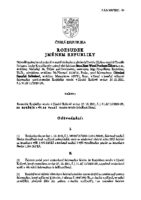
Czech Republic vs. Stora Enso Wood Products Ždírec s.r.o., August 2023, Supreme Administrative Court, No. 7 Afs 358/2021

Czech Republic vs. Eli Lilly ČR, s.r.o., August 2023, Supreme Administrative Court, No. 6 Afs 125/2022 – 65

France vs ST Dupont, July 2023, Conseil d’État, Case No 464928

Argentina vs Dart Sudamericana S.A., March 2023, Tax Court, Case No 35.050 I (IF-2023-35329672-APN-VOCII#TFN)

Czech Republic vs. Eli Lilly ČR, s.r.o., December 2022, Supreme Administrative Court, No. 7 Afs 279/2021 – 65
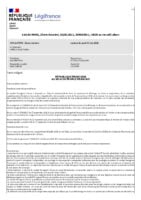
France vs Ferragamo France, June 2022, Administrative Court of Appeal (CAA), Case No 20PA03601

Czech Republic vs Aisan Industry Czech, s.r.o., April 2022, Supreme Administrative Court, Case No 7 Afs 398/2019 – 49

France vs ST Dupont , April 2022, CAA of Paris, No 19PA01644

Denmark vs Maersk Oil and Gas A/S, March 2022, Regional Court, Case No BS-41574/2018 and BS-41577/2018
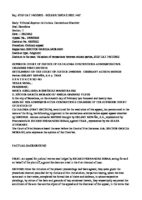
Spain vs Delsey España S.A, February 2022, Tribunal Superior de Justicia, Case No 483/2022 (Roj: STSJ CAT 1467/2022 – ECLI:ES:TSJCAT:2022:1467)

Italy vs SKECHERS USA ITALIA SRL, January 2022, Supreme Court, Case No 02908/2022

France vs (SAS) RKS, October 2021, Conseil d’Etat, Case No. 443130

France vs (SAS) SKF Holding France, October 2021, Conseil d’Etat, Case No. 443133
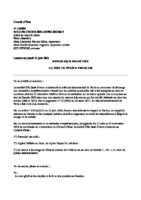
France vs SARL Elie Saab France, June 2021, Conseil d’État, Case No 433985

Denmark vs Tetra Pak Processing Systems A/S, April 2021, Supreme Court, Case No BS-19502/2020-HJR

Norway vs “Distributor A AS”, March 2021, Tax Board, Case No 01-NS 131/2017

Taiwan vs Weitian Technology Co. Ltd. December 2020, Supreme Administrative Court, Case No 109 Pan Tzu No. 661
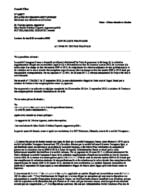
France vs Ferragamo France, November 2020, Conseil d’Etat, Case No 425577

Romania vs “GAS distributor” SC A, December 2020, Court of Appeal, Case No 238/12.03.2020
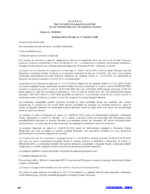
Romania vs “Electrolux” A. SA, November 2020, Supreme Court, Case No 6059/2020
Poland vs Cans Corp Sp z.o.o., August 2020, Administrative Court, I SA/Sz 115/20
Greece vs “G Pharma Ltd”, july 2020, Court, Case No 1582
Poland vs “Fish Factory” sp. z o.o., July 2020, Administrative Court, I SA/Gd 184/20 – Wyrok

Denmark vs. Adecco A/S, June 2020, Supreme Court, Case No SKM2020.303.HR
France vs SAS RKS (AB SKF Sweden) , June 2020, CAA of VERSAILLES, Case No. 18VE02848

Denmark vs Icemachine Manufacturer A/S, June 2020, National Court, Case No SKM2020.224.VLR

Finland vs A Oy, April 2020, Supreme Administrative Court, Case No. KHO:2020:34

Czech Republic vs. Eli Lilly ČR, s.r.o., December 2019, District Court of Praque, No. 6 Afs 90/2016 – 62

Czech Republic vs Aisan Industry Czech, s.r.o., October 2019, Regional Court, Case No 15 Af 105/2015
Denmark vs Adecco A/S, Oct 2019, High Court, Case No SKM2019.537.OLR

Norway vs A/S Norske Shell, September 2019, Borgarting lagmannsrett, Case No LB-2018-79168 – UTV-2019-807
Italy vs J.T.G.P. spa, September 2019, Lombardi Regional Tribunal, Case No 928/20/2019

Poland vs A Sp. z o.o., June 2019, Administrative Court, Case No GD 530/19

France vs ST Dupont, March 2019, Administrative Court of Paris, No 1620873, 1705086/1-3
Zambia vs Nestlé Trading Ltd, March 2019, Tax Appeals Tribunal, Case No 2018/TAT/03/DT

Indonesia vs PK manufacturing Ltd, January 2019 Court of Appeal, Case No. PUT-115599.15/2014/PP/M.XIIIB Tahun 2019
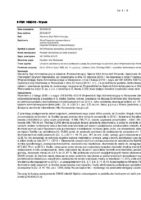
Poland vs “Blueberry Factory” Sp z.o.o., June 2018, Supreme Administrative Court, II FSK 1665/16

Costa Rica vs Reca Química S.A., December 2017, Supreme Court, Case No 01586 – 2017

Finland vs Loss Corp, December 2017, Administrative Court, Case no 17/0979/4

Zimbabwe vs CRS (Pvt) Ltd, October 2017, High Court, HH 728-17 FA 20/2014

India vs Herbalife International India , April 2017, Income Tax Appellate Tribunal – Bangalore, IT(TP)A No.924/Bang/2012
Russia vs Suzuki Motors, August 2016, Arbitration Court, Case No. А40-50654/13

India vs. L’oreal India Pvt. Ltd. May 2016, Income Tax Appellate Tribunal
Russia vs Hyundai Motors, January 2016, Supreme Court, Case No. А40-50654/13
Russia vs Mazda Motors, October 2015, Supreme Court, Case No. А40-4381/13
Russia vs Hyundai Motors, October 2015, Arbitration Court of Moscow, Case No. А40-50654/13
Russia vs Mazda Motors, March 2015, Arbitration Court of Moscow, Case No. А40-4381/13

India vs. Quark Systems Pvt. Ltd. Oct 2014, ITA No.282

Austria vs Wx-Distributor, July 2012, Unabhängiger Finanzsenat, Case No RV/2516-W/09
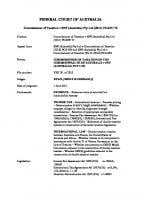
Australia vs SNF, June 2011
Argentina vs Aventis Pharma SA, February 2010, Tribunal Fiscal de la Nación, Case No 29,083-I

Germany vs “Loss Distributor GmbH”, April 2005, Bundesfinanzhof, I R 22/04

Germany vs “Clothing Distribution Gmbh”, October 2001, BFH Urt. 17.10.2001, IR 103/00

